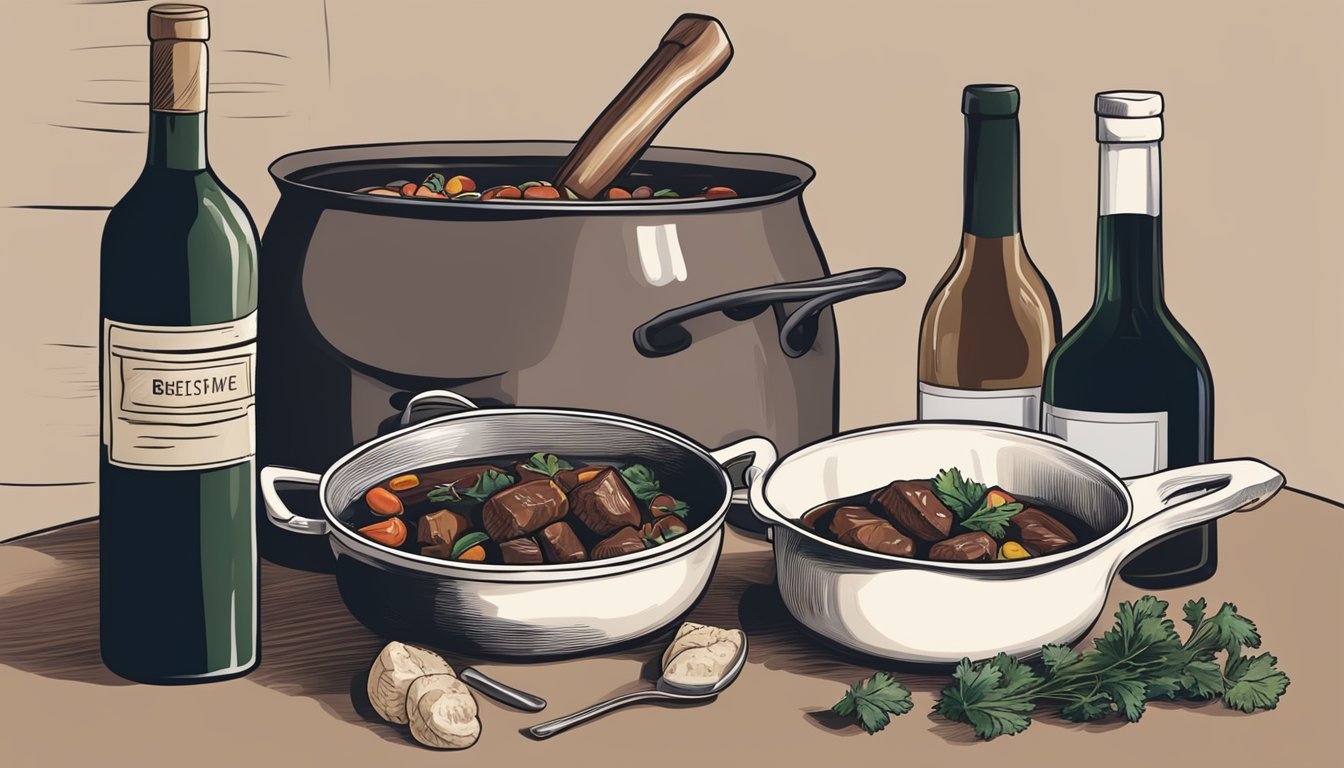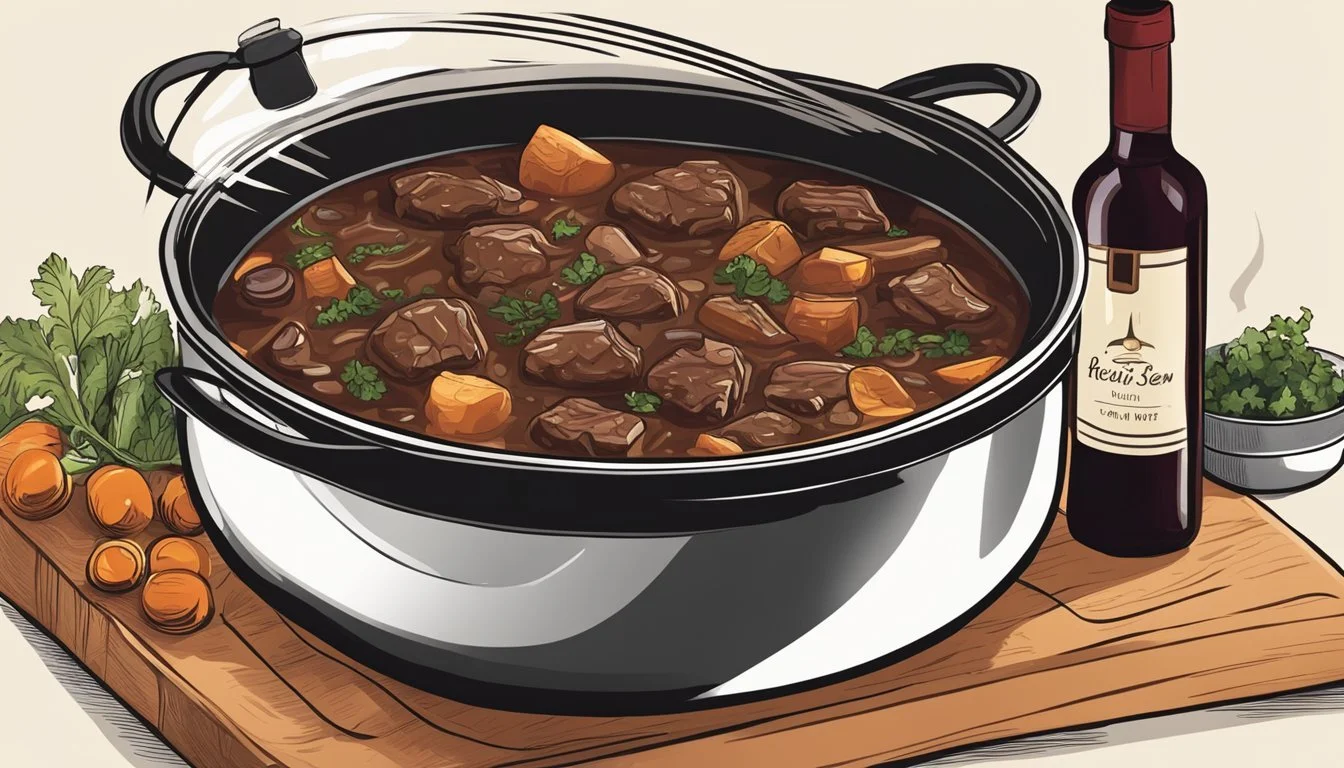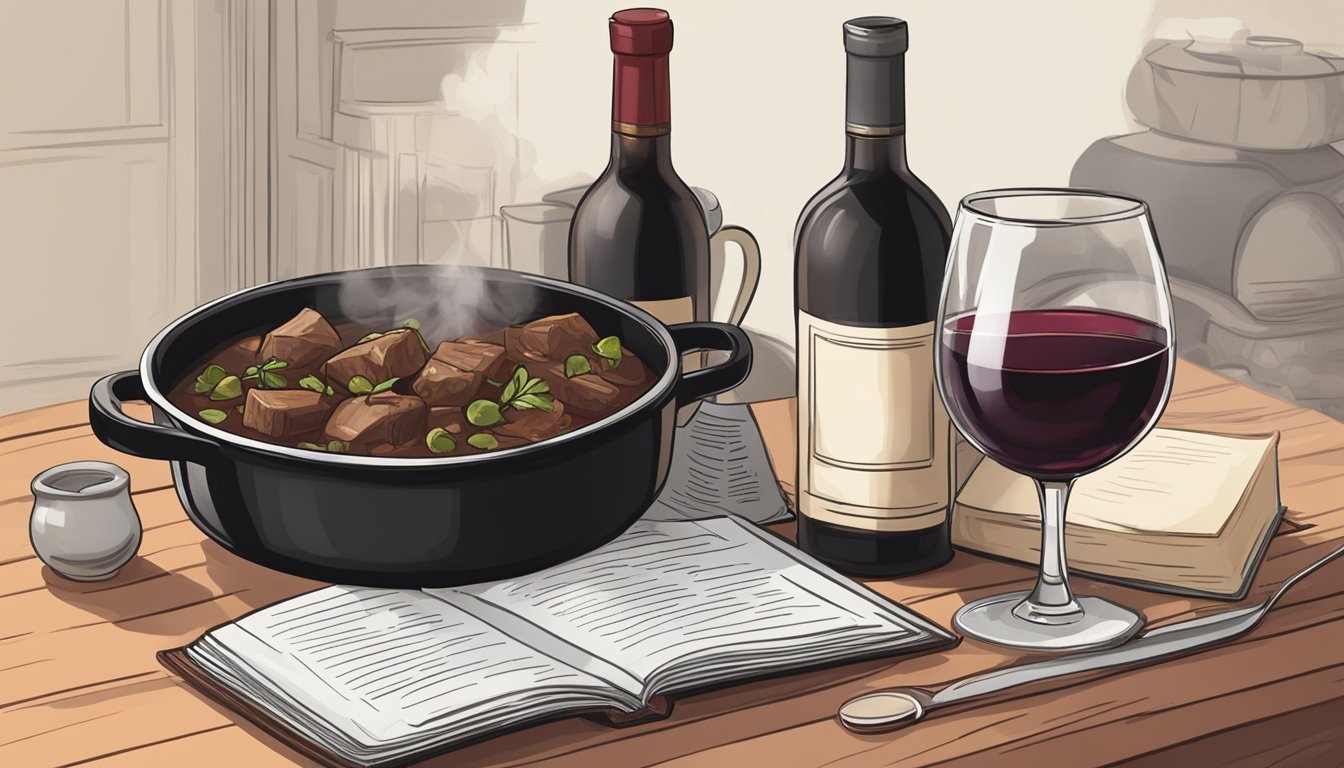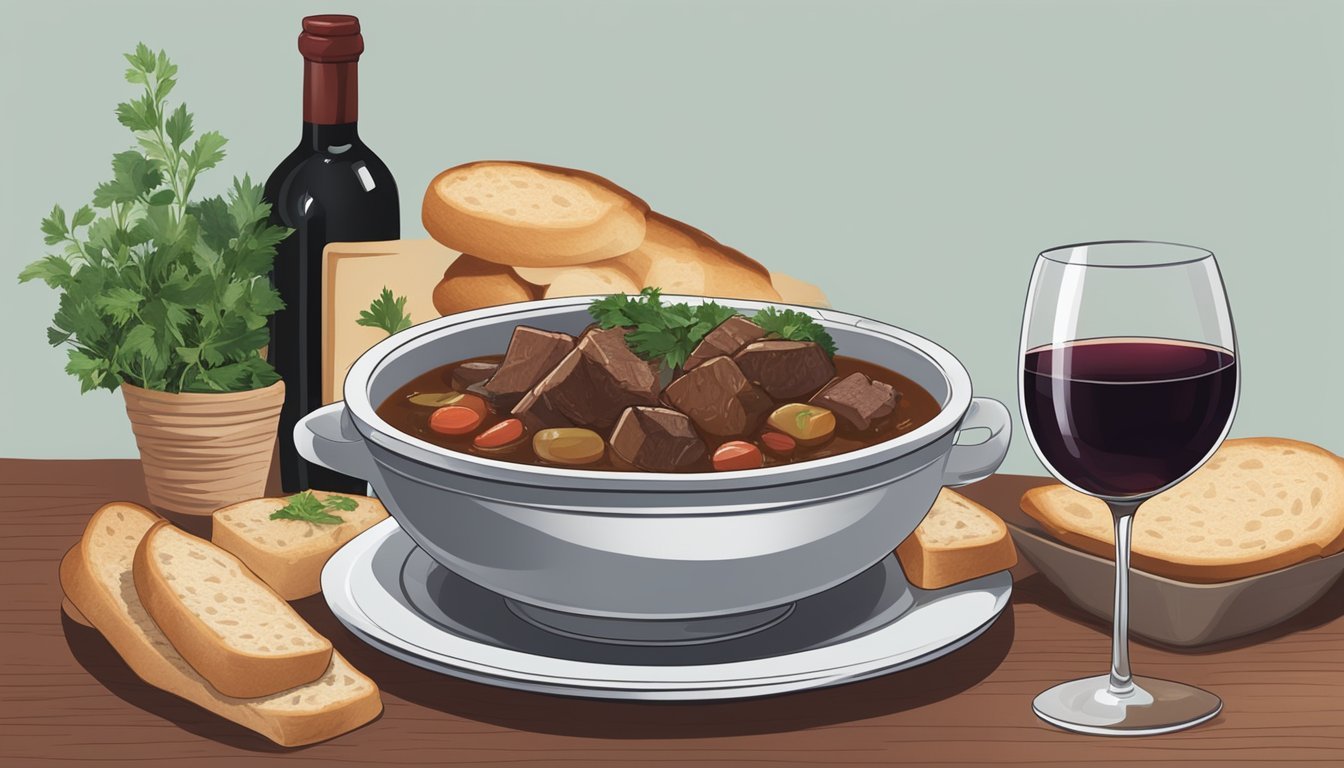What Wine Goes Well With Beef Stew?
Perfect Pairings for Your Hearty Meal
Pairing wine with beef (What wine goes well with beef?) stew (What wine goes well with beef stew?) is both an art and a science. Well-chosen wine can elevate the hearty flavors of beef stew, a staple comfort food during the colder months. The rich, savory character of beef stew, laden with tender chunks of beef, root vegetables, and aromatic herbs, seeks a wine companion that can complement its depth without overwhelming its complex layers.
Full-bodied red wines are traditionally favored to match the robust nature of beef stew. They possess the structure and tannins necessary to cut through the fattiness and richness of the meat. Varietals such as Malbec, Cabernet Sauvignon, and Syrah are often recommended. These wines bring a balance of fruit, earthiness, and spice, enhancing the dining experience with every spoonful.
Selecting the right wine for beef stew doesn’t have to be an intricate challenge. It's helpful to consider the specific ingredients and preparation method of the stew to fine-tune the pairing. For instance, a beef stew braised in red wine with mushrooms and bacon might harmonize well with the same wine used in cooking, such as a Pinot Noir or a rich Burgundy, creating a cohesive flavor profile. The goal is to find a wine that respects the dish's essence while contributing to an enriched palate.
Understanding Wine Pairings
The essense of a successful wine pairing lies in understanding how components like tannins and acidity interact with the flavors and textures of food. The age of the wine and its inherent flavor profile also play crucial roles in complementing a dish.
The Role of Tannins
Tannins are phenolic compounds in wine that give it structure and complexity. They are found in the skins, seeds, and stems of grapes. In the context of beef stew, wines with pronounced tannins, such as Cabernet Sauvignon or Bordeaux blends, match well because the protein and fat in the beef soften the astringency of the tannins, creating a harmonious balance on the palate.
Acidity and Balance
The acidity in wine is what provides its crispness and zest. This characteristic is particularly important in pairing as it must balance the rich flavors of a dish without overpowering it. Wines like Rioja, which has a high level of acidity, can cleanse the palate between bites, particularly balancing out rich and hearty stews (What wine goes well with stews?).
The Impact of Age on Wine
A wine's age can significantly alter its taste and how it pairs with food. Generally, older wines have softer tannins and a more nuanced flavor profile. For robust beef stews, an aged Shiraz may offer a desirable complexity and a smoother finish, enhancing the eating experience.
Flavor Profiles and Body
The body of a wine refers to its weight or fullness on the palate, typically categorized as light, medium, or full-bodied. Beef stew, with its hearty and bold flavors, requires a wine that can stand up to it. Full-bodied wines, boasting flavors of dark fruits and spices, like a ripe and spicy Syrah, are excellent companions to the dish's intensity.
Selecting the Perfect Wine for Beef Stew
Pairing the right wine with beef stew is a delightful culinary experience that elevates the dish. The robust flavors of beef stew demand wines that can complement its rich and hearty qualities.
Red Wines for Hearty Beef Stews
For traditional beef stews that feature robust flavors, red wines are the exemplary choice. Red wines with good tannin structure and pronounced flavors complement the meat's richness. Notable pairings include:
Cabernet Sauvignon: Its full-bodied profile and hints of dark fruit accentuate beef's deep flavors.
Malbec: Known for its big, fruity quality, it can stand up to the heartiness of the stew.
Syrah: This wine offers peppery notes, ideal for stews with a slight spice.
Barolo: With hints of truffle and tar, an aged Barolo has the complexity needed for rich beef stews.
Pinot Noir: For a lighter stew, the fruity and soft tannins of Pinot Noir are a beautiful match.
Zinfandel: Fruity with a spicy edge, it pairs well with tomato-based stews.
Côtes du Rhône: A versatile option, embodying spicy and warming notes that harmonize with hearty dishes.
Each wine has elements that either complement or contrast the flavors of the stew, creating a balanced palate.
White Wines as an Alternative
Though red wines are commonly chosen for beef stew, white wines can also be a delightful complement, especially for stews lighter on tomatoes and heavy sauces:
Gewurztraminer: It stands out with its aromatic sweetness, countering the savory depth of the stew.
Chardonnay: When oaked, it imparts a buttery richness that can go well with less tomato-heavy stews.
One should opt for white wines that have enough body and aromatic intensity to not be overshadowed by the stew's rich flavors.
Top Red Wine Varietals for Beef Stew
Pairing the right red wine with beef stew not only complements the flavors but can elevate the entire dining experience. Selections are typically full-bodied with bold flavors that can stand up to the hearty nature of beef stew.
Cabernet Sauvignon and Merlot
Cabernet Sauvignon is recognized for its depth and complexity. It typically brings robust tannins and dark fruit notes that marry well with the rich flavors of beef stew. Merlot, on the other hand, offers a softer, more velvety texture with notes of ripe plums and cherries, providing a nice balance without overwhelming the palate.
Cabernet Sauvignon: Pairs well with intensely flavored stews.
Merlot: Best matched with stews that are less spicy and tomato-based.
Syrah and Shiraz
Syrah and its Australian counterpart, Shiraz, are distinguished for their spicy and bold fruit flavors. These wines often carry hints of black pepper and dark berries, which can stand against the complexity of a beef stew. Their natural spiciness brings out the subtleties in the dish.
Syrah: Optimal for stews with earthy notes.
Australian Shiraz: Suited for slightly sweeter and heartier stews.
Zinfandel and Malbec
Zinfandel offers a fruit-forward profile with a spicy kick, which complements beef stews that incorporate sweeter vegetables like carrots. Malbec brings a rich, dark fruit flavor and smokiness to the table, enhancing the umami characteristics of the beef.
Zinfandel: A good match for stews with a bit of sweetness.
Malbec: Best with robust and savory stew recipes.
Regional Red Wines
Certain regional red wines like Red Bordeaux, Barbaresco, and Tempranillo showcase unique characteristics that are a result of their terroir. Red Bordeaux, known for blending varietals such as Cabernet Sauvignon and Merlot, pairs exceptionally with a classic beef stew.
Red Bordeaux: Excellent for classic beef stew recipes.
Barbaresco: With its Nebbiolo grapes, it complements stews with earthy and truffle flavors.
Tempranillo: Offers a balance with stews that include tomato and red pepper elements.
Recipe Tips for Beef Stew
Crafting a flavorful beef stew involves selecting quality ingredients and employing tried-and-true cooking techniques. From choosing the best cut of meat to perfecting the stew's seasoning, each step is crucial for a rich and satisfying dish.
Choosing the Right Cut of Beef
Beef stew requires a cut that will tenderize perfectly through slow cooking. Chuck roast is an excellent choice—it breaks down well over time, imparting a juicy texture and deep flavor. Stew meat cut from the chuck or round and sold in cubes also fits the bill for convenience without sacrificing taste.
Vegetable Additions and Variations
A traditional beef stew contains a hearty mix of vegetables, with carrots, potatoes, corn, onion, and sometimes tomatoes and mushrooms. They not only contribute to the stew's robust flavors but also provide a comforting thickness. One can opt for the classic mirepoix — a combination of finely chopped onions, carrots, and celery — or vary the vegetables according to preferences. Consider browning mushrooms in olive oil for an earthy element or adding corn for a subtle sweetness.
Seasoning and Cooking Techniques
The seasoning is what ties the stew together; liberal use of salt and pepper, along with aromatics like garlic, form the base of the flavor profile. Adding herbs like thyme or rosemary can evoke an earthy taste, while bay leaves impart a subtle complexity.
When it comes to cooking, both a Dutch oven and an Instant Pot are suitable, with the former being the classic method and the latter offering a speedier alternative. Browning the beef is a critical step—searing in a hot Dutch oven with olive oil not only contributes to a flavorful crust but also leaves fond, which adds depth to the stew when deglazed. For Instant Pot users, make sure to seal and cook on high pressure to ensure the meat becomes tender, then use the sauté function to reduce the stew to the desired consistency.
Pairing Wine with Beef Stew Variations
Pairing the right wine with a beef stew can transform a meal, complementing the rich flavors and enhancing the overall dining experience. Each variation of beef stew has traditional pairings that bring out the dish's distinctive qualities.
Beef Bourguignon and French-Inspired Stews
French stews like Beef Bourguignon (What wine goes well with beef bourguignon?) demand wines that can stand up to strong flavors and tender meat. Burgundy wines, especially those made from Pinot Noir grapes, are traditional choices. Their dark fruit notes and earthy undertones pair well with the rich, savory sauce of the stew. A full-bodied Chianti, with its elegance and tannin structure, also makes an excellent complement.
Italian and Mediterranean Influences
Stews with Italian and Mediterranean influences often include ingredients like tomatoes, basil, and olives, which pair well with Italian wines. Sangiovese, known for its savory profile, shines with tomato-based stews, while Aglianico offers bold flavors and tannins that align with hearty meats. For stews incorporating Italian food (What wine goes well with Italian food?) elements, choose a Chianti or a Nero d’Avola; their acidity cuts through the richness of the dish, balancing the flavors.
Contemporary Fusion and Experimental Pairings
When it comes to contemporary fusion or experimental beef stews, the wine pairing world becomes exciting and diverse. These dishes might incorporate unconventional spice mixes or fruit elements, calling for innovative wine selections. Grenache blends, with their bright fruit and spicy notes, can uplift exotic stews, whereas Vinsobres, with its peppery character, could tackle adventurous and robust flavors. A key is to match the intensity of the wine with the intensity of the stew's flavor profile.
Serving and Enjoying Your Pairing
Selecting the right wine to accompany a beef stew involves more than merely choosing a bottle; it also requires attention to how the wine is served to enhance the overall dining experience.
Decanting and Glassware
For a successful beef stew wine pairing, decanting plays a crucial role, especially for full-bodied red wines like Cabernet Sauvignon or Syrah. Decanting allows the wine to breathe, softening the tannins and releasing the aromas. Serve the wine in large, bowl-shaped glasses to further allow the flavors to develop as one savors the stew.
Accompaniments and Side Dishes
Beef stew calls for simple, rustic accompaniments. Crusty bread serves as the perfect vehicle to soak up the rich sauces and complements both the stew and the wine. As for side dishes, they should not overshadow the main event. Opt for roasted vegetables or a simple green salad to maintain balance and let the beef stew wine pairing shine.
Setting the Atmosphere
The atmosphere is as essential as the pairing itself. For the beef stew wine pairing experience, one might consider a setting that is warm and inviting. Soft lighting and a clear, set table accentuate the visual appeal of the richly colored stew and the deep red wine, while background music at a low volume can enhance the sensory enjoyment without distracting from the flavors and conversation.
Health Considerations and Benefits
When selecting wine to pair with beef stew, one should consider the health implications of both the wine in moderation and the nutritional composition of beef stew. These factors can influence the overall enjoyment and potential benefits of the meal.
Moderation in Wine Consumption
The health impact of wine is significantly influenced by the quantity consumed. Studies suggest that moderate wine consumption, particularly red wine, may have cardiovascular benefits due to compounds such as resveratrol, but excessive intake can lead to negative health effects. It is generally recommended that individuals adhere to the dietary guidelines which suggest up to one drink per day for women and up to two for men.
Nutritional Aspects of Beef Stew
Beef stew can be a hearty, nutrient-dense meal, offering a variety of vitamins, minerals, and proteins. The composition of beef stew typically includes:
Proteins: Essential for muscle repair and growth, found in the beef.
Vitamins: Vegetables such as carrots and potatoes add vitamins A and C, respectively.
Minerals: Ingredients like beef and potatoes contribute iron and potassium.
Fiber: Often present due to the inclusion of vegetables.
Balancing these elements can lead to a fulfilling meal that supports overall health. However, it is also important to consider the fat content and cooking methods to ensure that the stew remains a healthy part of a balanced diet.
Expert Advice and Tips
Selecting the perfect wine to complement beef stew involves understanding the intricate balance between the robust flavors of red meat and the nuanced profiles of full-bodied red wines. Experts in wine and culinary arts offer invaluable insights to elevate this pairing to new heights.
Consulting Sommeliers
Sommeliers are the go-to professionals when one needs advice on wine pairings. They often suggest full-bodied red wines such as Malbec or Barolo to accompany the hearty flavors of beef stew. These wines are chosen for their ability to stand up to the rich and savory aspects of red meat. A sommelier would also consider the stew's seasoning and cooking method before making a recommendation.
Learning from Chefs
Chefs bring a practical perspective to wine pairing, having experienced firsthand how flavors develop in the kitchen. They might recommend incorporating a splash of the wine you intend to serve into the stew itself, creating a cohesive dining experience. A chef's tip for beef stew is to look for wines with earthy or rustic notes, which can complement the umami and aromatic herbs featured in the dish.
Continuing Your Wine Education
Continuous education can demystify the process of finding an ideal wine pairing. Various resources exist for those interested in becoming more knowledgeable about wines. Wine experts encourage attending tastings, reading expert-penned articles, and experimenting with different pairings to discover your preferences. They assert that pairing education is an ongoing journey that evolves with one's palate.







